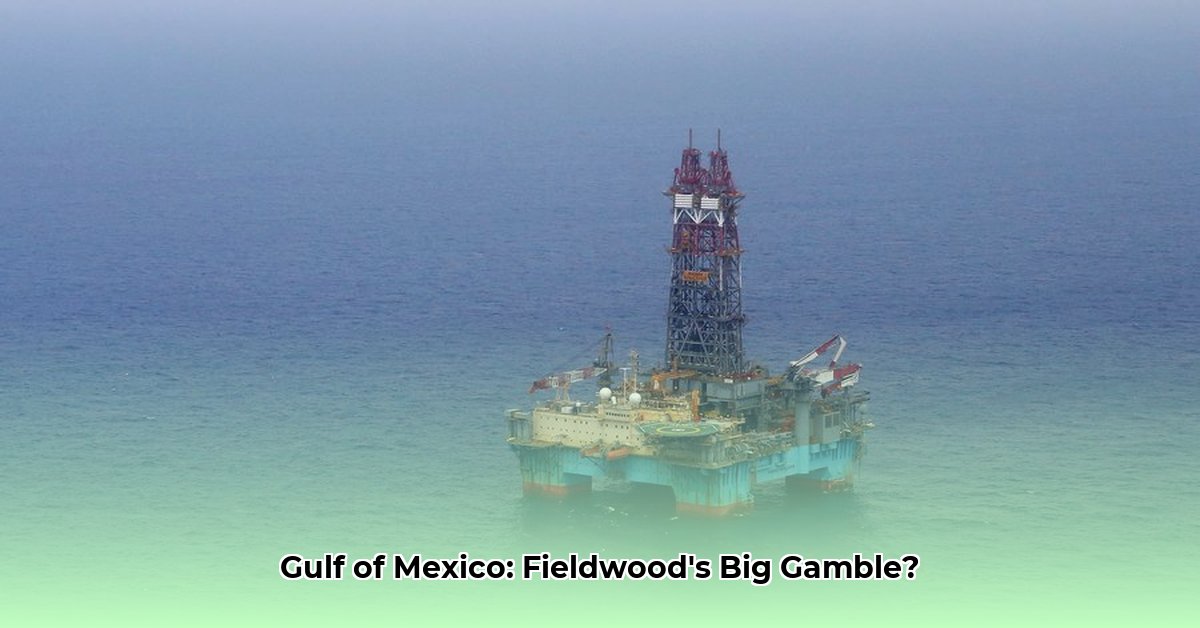
Fieldwood Energy LLC, established in 2012, has rapidly become a significant player in the Gulf of Mexico (GOM) oil and gas sector. Its aggressive acquisition strategy, acquiring substantial assets from companies like Apache and SandRidge Energy, propelled its growth. By early 2014, Fieldwood controlled over 296 million barrels of oil equivalent (Mmboe), establishing a substantial operational footprint across numerous offshore blocks. Daily oil production exceeded 120,000 barrels of oil equivalent per day (boepd). However, a comprehensive financial picture remains elusive, hindering a complete evaluation of long-term viability. Data gaps regarding revenue, profit margins, and debt levels require further investigation.
Operational Analysis & Future Projections
Fieldwood's success hinges on several key factors. Its strategic acquisitions provided immediate scale, but operational efficiency and risk management are crucial for sustained growth. The GOM presents unique challenges, including volatile oil prices, stringent environmental regulations, and geopolitical instability. Understanding these dynamics is critical for evaluating Fieldwood's future prospects. How effectively Fieldwood navigates this complex environment will determine its long-term success. A comprehensive analysis requires addressing several data gaps:
- Reserve Breakdown: A detailed breakdown of oil and gas reserves is needed to accurately assess the long-term value of Fieldwood's assets and to understand the balance between oil and gas resources. This information is crucial for informed investment decisions.
- Production Costs: Analyzing production costs per barrel of oil equivalent is essential for evaluating Fieldwood's profitability and competitiveness within the GOM market. High production costs may significantly impact the company's bottom line and sustainability.
- Well Productivity: Data on individual well productivity is vital for predicting future production output and determining the efficiency of Fieldwood's operations. High-performing wells contribute to profitability and sustained growth.
Key Stakeholder Objectives:
The success of Fieldwood Energy depends on the alignment of various stakeholder objectives. A balanced approach is needed to ensure the long-term sustainability and profitability of the company.
| Stakeholder | Short-Term Goals (0-1 Year) | Long-Term Goals (3-5 Years) |
|---|---|---|
| Fieldwood Energy LLC | Maximize production from existing assets; potentially divest underperforming assets. | Invest in advanced technologies to enhance efficiency; explore new opportunities in the GOM and beyond; prioritize regulatory compliance. |
| Investors | Closely monitor financial performance; consider the impact of volatile oil prices; assess the level of risk inherent in the GOM energy sector. | Long-term investment aligned with Fieldwood's expansion strategy, focusing on sustainable and responsible operations. |
| Regulators (US/Mexico) | Maintain vigorous environmental oversight; enforce safe operational procedures. | Establish balanced regulations to support offshore energy development while minimizing environmental impact. |
| Local Communities | Address environmental concerns and promote job creation. | Foster partnerships that ensure local communities benefit from future projects. |
Geopolitical Risk Mitigation in Gulf of Mexico Operations
Fieldwood, like other GOM operators, faces significant geopolitical risks. Fluctuations in global oil prices and political instability in the region directly impact their operations and profitability. Effective risk mitigation requires a multi-pronged approach:
- Supply Chain Diversification: Reducing reliance on any single supplier or route is crucial for resilience in the face of geopolitical instability. Diversification helps mitigate supply chain disruptions.
- Scenario Planning: Developing contingency plans for various scenarios (e.g., political unrest, natural disasters) is essential for proactive risk management. This enables Fieldwood to adapt to unforeseen circumstances.
- Robust Cybersecurity: Protecting digital infrastructure from cyberattacks is paramount for protecting critical operations and data. This maintains the integrity of vital systems.
- Insurance & Hedging: Comprehensive insurance coverage and financial hedging strategies protect against price volatility and unexpected losses. This safeguards financial stability.
- Regulatory Compliance: Proactive compliance with all relevant regulations reduces legal and operational risks. This is essential for maintaining a strong operational license.
- Stakeholder Engagement: Maintaining transparent communication with governments, regulators, and local communities builds trust and fosters a more stable operational environment. This is essential for long-term social license.
- Investment in Renewable Energy: Although not a direct mitigation of geopolitical risks specific to oil, investing in renewable energy sources diversifies the energy portfolio and reduces long-term dependence on volatile fossil fuel markets. This enhances overall resilience.
Data gaps remain concerning the precise number of leasehold blocks operated by Fieldwood, with varying reports citing figures between 500 and 650. This discrepancy needs clarification to accurately assess the company's operational footprint. Further research, including reviews of publicly available records and potential communication with Fieldwood, is required. A thorough assessment incorporating detailed financial data, production statistics, and a clear understanding of geopolitical risks is crucial for predicting Fieldwood Energy's long-term sustainability and growth trajectory within the competitive GOM energy market.